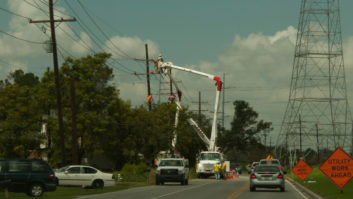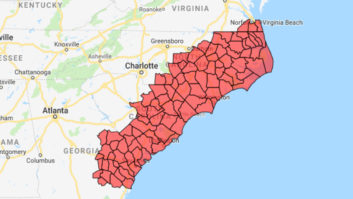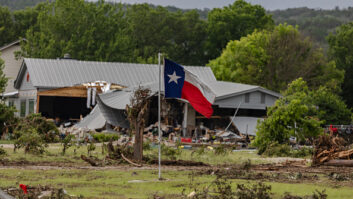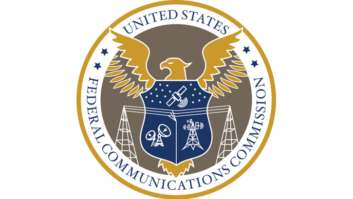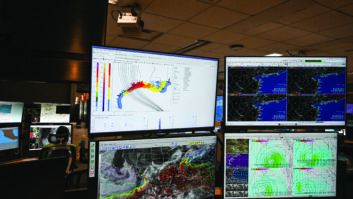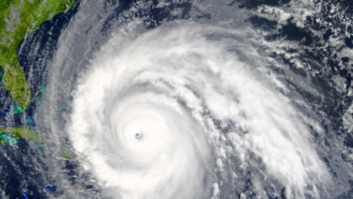
Engineers face a lot of adventures, from the late-night phone call that something has just gone terribly wrong to how to keep the GM happy by reducing costs.
This year’s NAB Show presents two session sequences that radio engineers will find fascinating and informative — or may turn your stomach.
The morning sessions regarding “Disaster Preparedness, Recovery and Security” may cause the butterflies to start flying. Andy Laird of Journal Broadcast Group is moderator.
The discussion begins with “Strategies for Disaster Preparedness: Staying on the Air if the Worst Happens.” Chuck Kelly of Nautel Ltd. leads this talk.

Steve Fluker will talk about disaster preparation. This picture shows damage from a 2007 tornado that struck WCFB(FM) in Daytona Beach, Fla. Kelly, who has been in the business for 37 years and started as a DJ, says natural or man-made disasters are a critical element to consider when planning for the worst. From tsunamis to hurricanes, such events disrupt basic infrastructure and put increased responsibility on broadcasters. It’s radio’s job to have a plan in place so we can continue to provide information (and maybe a little entertainment) to our listeners. Radio is still the strongest mobile media; even with an increase on Web services, generally our systems are built to be robust enough to handle emergencies.
Kelly said broadcasters should plan for loss of power, communications and transportation; have alternate sites in mind should normal studio and transmitter sites not be available; and consider a kit of supplies, ranging from “studios in a box” to generator fuel.
Steve Fluker of Cox Radio then discusses “Are You Prepared for a Disaster?”
He’s seen a few of them. Florida may get more than its share of bad weather but there is no place immune to all forms of natural or man-caused calamity. Fluker will talk about your planning and how it will might make you, as he put it, “the station hero.”
Critical failures or disasters need not be big events. We think of tornadoes, hurricanes, floods, lightning, hail and wind damage; we see fire and vandalism. But small events too can take you down: a power failure coupled with a generator that’s offline; an STL path failure due to a dish blowing out of alignment or atmospheric conditions causing microwave fade or ducting; a transmission line section burning. A pandemic could send a quarter of your staff home sick; a chemical scare could cause your building to be evacuated.
The White Space Era A Wednesday afternoon session of the Broadcasting Engineering Conference focuses on “Spectrum Issues for Broadcasters.”
Topics include “Leveraging White Spaces and an Introduction to the New Networks Being Built With Them,” “Wireless Microphone Testing for White Space Proceeding in Mid-town Manhattan,” “What Wireless Mic Users Need To Know About White Spaces and the 700 MHz Band,” “Radio Communications In Today’s Complex RF World,” “Broadcast Operation and Coexistence in the White Space Era” and a panel discussion about these spectrum issues. Fluker will discuss how to be prepared to handle eventualities so you confidently can face your managers, corporate office and insurance companies while you rebuild and recover.
“Putting the Final Touches on Next-Generation EAS” is a panel moderated by NAB’s Larry Walke and featuring speakers from FEMA, the FCC and the Maine Association of Broadcasters.
As Radio World has reported, FEMA is rolling out a new Common Alerting Protocol that will allow the same warning message to be delivered via many different warning platforms, while the FCC is exploring a new process of required annual nationwide EAS tests.
Such transitions can produce questions and confusion. This discussion promises insight as to what the process means to you.
Daniel Slentz is vice president of technology and broadcast operations for KERA(FM/TV) and KKXT(FM) in Dallas/Ft. Worth.
